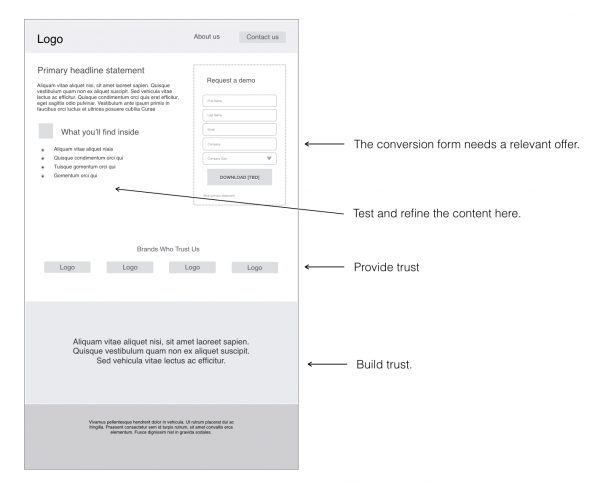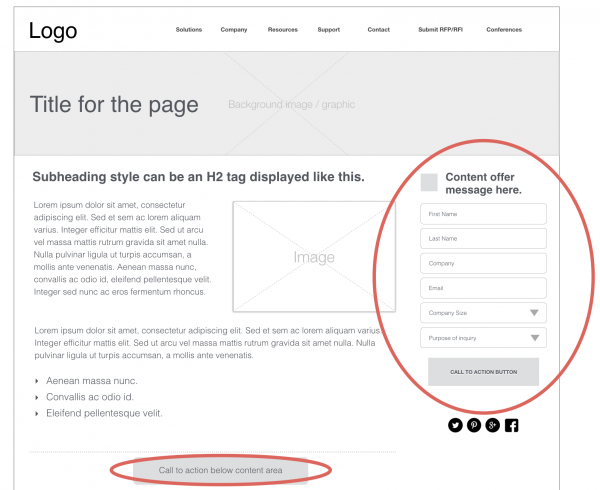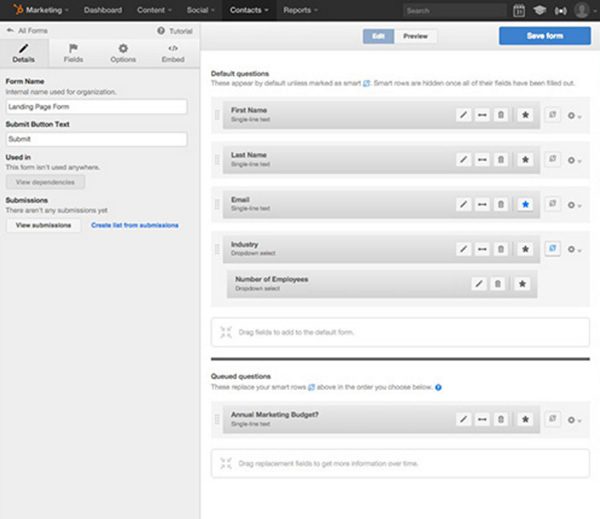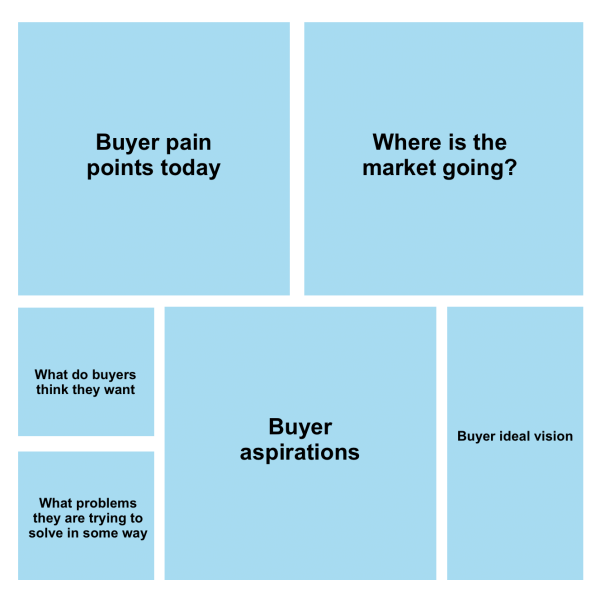
By Nicole Cappella, Content Specialist
Digital marketing has transformed the way that businesses reach new audiences and identify which contacts are ready for sales outreach. This process requires that sales and marketing work together closely to ensure the right qualifiers are being used and the leads that are handed off are truly ready to speak to sales.
This is where a great landing page can make all the difference. A landing page is a website page with a form dedicated to converting leads. The information gathered on the form can tell a marketing team a lot about a potential customer, helping to determine the best time and approach for sales outreach.
There are a few common mistakes that can lower the conversion rate of landing pages. These include:
· Lack of a compelling call-to-action (CTA)
· Failure to explain the value of the offer
· Asking for too much/irrelevant information
A potential customer may find a landing page, through organic or paid ads. But without a compelling landing page, a valuable offer, and an optimized form, the business won’t get the information they need to separate the good lead from the bad.
More Reading: Benefits of a Landing Page for B2B
Even a company that has created landing pages in the past should review them regularly to ensure that they are employing best practices and to optimize as needed. A great landing page needs three things: clear conversion points, the right qualifying questions, and strong and buyer-centric messaging.

A clear conversion point may be the most important factor in creating a great landing page. There must be a clear reason for a lead to provide their information: what should they expect? In exchange for their information, what will they receive?
Sometimes this can be a content download, such as a case study. Or you can advertise a sales offer such as an exploratory call, a demo, or a 30-minute consultation. This is what sets a landing page apart from a generic ‘Contact Us’ page. While a potential customer can complete a form on either page, when they give their information on a landing page, they get something specific in return.
More Reading: How to Optimize a Landing Page for IoT
A contact page puts the responsibility on the lead to express what they want, and the company risks losing the momentum and context that made the lead motivated to click in the first place. With a landing page, though, the lead is gaining something of clear value in exchange for their information. This strengthens the relationship between the lead and the brand and helps to move them closer to becoming sales-ready.

Read more: 6 Myths About a Landing Page Strategy (That Will Actually Kill Conversions)
An individual landing page for each offer is essential to improving conversion rates. This takes more work across more pages. But it not only improves overall conversion rates, but it also provides valuable insights into what information potential customers are interested in and what path they took to get there. This information can be used to tailor communications and sales outreach to speak directly to a potential customer’s interests, pain points, and challenges.
Not every person that completes a form on a landing page is a good lead, but a failure to weed out the unqualified leads wastes everyone’s time. This can break down the relationship between sales and marketing.
A great landing page for sales leads will be used to filter out good leads from bad submissions.

First, the sales team must be included to figure out the information that is required for a lead to be considered ‘qualified’ for sales outreach. This may mean adding criteria to landing page forms such as job role, challenge, budget, or something more specific to your company.
Businesses often include disqualifiers as well. For example, there are some individuals that may request to download an offer that are not qualified for sales outreach – for example, a student, a business development rep, a potential partner, or a job-seeker.
Read more: 5 Simple Ways to Increase Sales Leads
Once the qualifiers (and disqualifiers) are determined, a workflow can be automated through a CRM like HubSpot; or potential leads can be subjected to manual review so that only the most likely candidates are forwarded to sales for outreach.
Many B2B companies struggle to capture sales leads on their landing pages because they rely on ineffective messaging. Some examples of messaging that are common but not compelling to leads include:
Why is this messaging approach ineffective? Because it is company-centric and not about a buyer’s needs, goals, and challenges. Instead of generic language, consider using the individual landing pages for specific content offers to create multiple relevant touch points.

Invest in buyer research and create messaging that speaks to a strong and unique value proposition. This will compel buyers to move farther down the marketing funnel and differentiate you from the competition.
Having trouble seeing your unique value proposition? It can be difficult to step outside of your day-to-day messaging, so consider hiring a content marketing agency to perform industry research and bottom-up branding for messaging to creating a dynamic landing page for sales leads.
by Jonathan Franchell, CEO of Ironpaper - For more tips and hacks: Need to remove a new line after h1 tags? Both web designers and SEO practitioners need to employ headline tags: H1, H2, H3 in several ways to improve web page structure and tag...

The Crowded Arena of the IT Marketplace Updated December 2024 The Information Technology (IT) landscape is experiencing rapid growth and intensifying competition. IT spending is projected to reach nearly 5.1 trillion U.S. dollars in 2024, a...

Updated December, 2024 The field of digital marketing is evolving rapidly in response to new technology and changing buyer expectations. To help career-minded marketers, we’ve rounded up the top 10 skills needed to succeed in the field. These are...

The marketing industry is transforming significantly due to generative AI and increasing market complexity. Gartner's prediction of a 25% decline in traditional search traffic suggests that the era of search engines is dying. AI tools, particularly...
